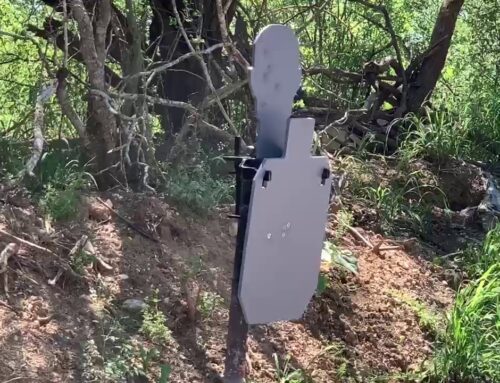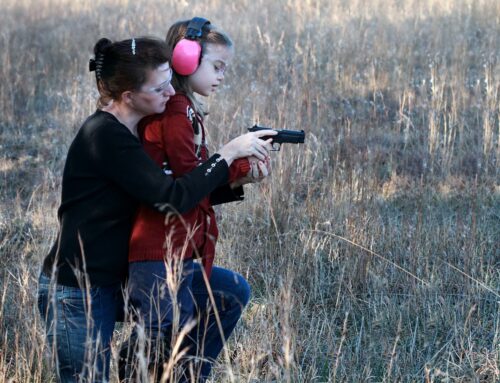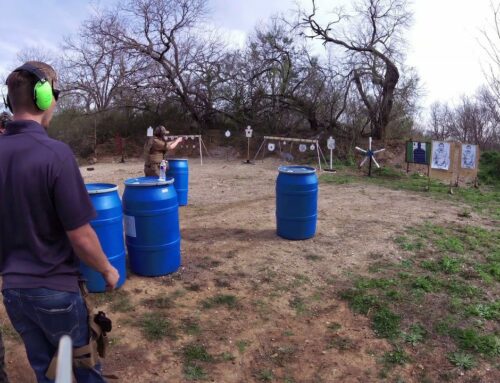Building a home gun range is a great way to become a better shooter, and get more out of your firearms investment.
Range fees can get expensive, especially memberships to outdoor ranges that have longer or more advanced firing lines. Even with most outdoor ranges, you aren’t going to be able to set up targets the way you want for training, and you’re always going to have to work around other shooters.
Building your own backyard range can fix that, assuming you have the land to do so, and is a great way to improve your shooting skills, have more fun with your firearms, and get outside more (which, let’s face it, we all need to do).
The best part is, building a gun range is easier than you might think and can be a fun project in its own right to boot.
Benefits of Building Your Own Range
Building your own range has a few notable benefits.
First and foremost, it lets you get more out of the firearms you already own.
With a home range, you can shoot as much as you have time and ammo for, which means you’ll get the most out of your guns. Modern firearms are easily good for ten thousand rounds or more (depending on caliber) and very, very few of us will even get close to that.
It’s almost like buying a Ferrari and then never taking it above 20mph. Why have that much money tied up if you’re not going to try and get the most out of it?
Secondly, and more important, having a home range allows you to improve your abilities as a shooter. For training, whether for hunting, self-defense, or competition, there’s no better option than having your own range, even if it’s more limited than the range at your local gun club.
Most of those nice clubs with shooting bays and steel targets and the like are going to cost you $100 a month too.
Having a range in your backyard lets you practice the way you want, when you want, without worrying about irresponsible people shooting in the lane next to you, or nannying range officers who are worried you might be one of the responsible people.
If you’re a competition shooter, having a range you can go to whenever you want is one of the best ways to get better quickly and compete at the highest levels.
Sold on the idea of a home gun range? Awesome! Let’s talk about how to build one.
Safety First
First and foremost, we have to talk about safety. Obviously, I don’t need to tell you that you need to have a safe area where you can legally shoot, without endangering anyone or anything. We all know the Four Basic Rules of Gun Safety, right?
When applying those rules to a gun range, we need to keep a few things in mind.
First, do we have enough room and adequate backstops to keep everyone safe, including our (very) distant neighbors? This is especially important for rifle shooters, so all PRS folks remember that your guns can reach some really serious ranges, so backstops are important.
You can build backstops out of loosely packed dirt, or railroad ties.
Next, do we have a shooting lane that isn’t pointed towards any structures or equipment that could be damaged by our shooting?
Finally, do we have first aid and emergency supplies on hand in the event of an accident?
Shooting Area
After we have an area set up to shoot towards with sufficient backstops in place, it’s time to look at the area we’ll be shooting from.
For most of us, that’s going to mean building or buying at least one shooting bench.
Other than a shooting bench, you may want to include some chairs, and table of some kind so you aren’t leaving gun cases on the ground, and to give you a place to reload mags, clean your guns, or just sit down and have a sandwich when you need a lunch break.
If you’re a PRS or 3-Gun shooter, you may want to knock together some simple barricades to practice with, which I think is a great way to improve. Shooting well in these kinds of events is one thing, but your time is going to hinge on your transitions in a lot of cases.
I’ll also keep some plastic water barrels, screens, and other stuff lying around so I can set up simulated competition stages that make my training more effective, and more fun.
Finally, something to catch brass with can be a big help, and can actually save you some money if you reload, or know someone who does.
Either way, having something to catch brass makes your life a lot easier, even if you’re just saving time when it comes to cleanup at the end of a long day of shooting.
For brass catchers, a simple tarp spread on the ground is the simplest and most field-expedient way to do things, but putting some gravel down can also make life easier, and is a little more permanent.
Targets

Alright, here’s the fun part.
There are a number of great targets out there that you can use, so we’re just going to go over your two main options, and then address some of the issues with each.
First, you have traditional paper and cardboard targets. These are available in a variety of different styles, but my favorite for training is usually either an IDPA target or a B-27 Target.
They require a stand, which you can either build yourself out of a couple of 2x4s, or you can just buy pre-made ones.
Next, we have steel targets, which are more expensive, but are good for several thousand rounds, and can last almost forever with proper care and attention.
You can get all sorts of steel targets, from plate racks to silhouettes, and you can get them in either static form, or get dynamic ones that fall over or move when shot for added challenge and fun.
There are a few safety concerns, but mainly what you need to be aware of are the risks of damaging the target, the risk of ricochet, and the risks of sparks igniting flammable material like grass or leaves.
The first two issues can be avoided by following the caliber/impact energy guidelines from the manufacturer, and by hanging your target in a manufacturer-approved way. Pretty simple.
Fire is a bit more complicated, but basically just clear the area around your targets, especially if you’re going to be shooting at longer ranges where you may not notice a fire starting until it’s too late.
Parting Shots
There’s a lot to love about having a range on your property, and getting one built doesn’t take too much effort.
If you have the space and follow the steps above, you’ll have a great setup for training, whether you’re interested in self-defense, competition, hunting, or just turning money into noise and having fun with your buddies.






